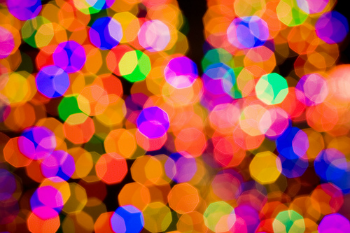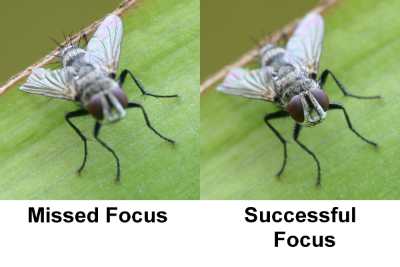
With the exception of the rare “happy accidentâ€, unintentional image blur can be quite frustrating. When it comes to photography, blur refers to anything within the image that is visually obscured in form. If you’ve ever found yourself feeling defeated in trying to eliminate or reproduce blur, you should stay tuned for this series aimed to teach you about the varying types and causes of blur.
Firstly, you must know that there are three basic qualities of blur. This article will refer to them as Type 1, Type 2, and Type 3. The first quality, Type 1, is best characterized by the smoothing out of details which produce a hazy look that the photo industry calls a “soft†quality. Type 2 can be described as streaking, stretching, wispy, and/or ghostlike. The final quality, Type 3, is often referred to as being “fuzzy†because details that should appear smooth scatter or become jagged.
Focal Blur
You may not realize it, but almost every image has some degree of focal blur. It’s the easiest to spot because it looks exactly how our eyes interpret objects out of focus; it is also the perfect example of Type 1 quality. Objects farther from the point of focus increasingly lose more detail and appear “softerâ€.  What differentiates focal blur from other types of blur is how the edges of objects become undefined in a uniform way. Like all types of blur, however, each problem related to this blur effect can have many different causes.  The most common problem is missing focus, wherein there is a failure to hit the desired focal point. It is usually detected when using a “fast†lens with lower aperture capabilities, i.e. f/2.8 or smaller, while shooting handheld and opened up all the way.  If you ask a camera repair technician, you’ll learn that you’re experiencing front or back focus, depending on which direction your lens is malfunctioning.  A controlled environment is the ONLY way to properly detect if it is an equipment malfunction. Shooting at f/2.8 (or lower) has such a shallow depth-of-field, it only takes the minutest of motion from either the photographer and/or their subject to cause missed focus.  On a positive note, however, some photographers intentionally front or back focus in order to use the focal blur to soften certain unflattering parts of their subjects.
The most common problem is missing focus, wherein there is a failure to hit the desired focal point. It is usually detected when using a “fast†lens with lower aperture capabilities, i.e. f/2.8 or smaller, while shooting handheld and opened up all the way.  If you ask a camera repair technician, you’ll learn that you’re experiencing front or back focus, depending on which direction your lens is malfunctioning.  A controlled environment is the ONLY way to properly detect if it is an equipment malfunction. Shooting at f/2.8 (or lower) has such a shallow depth-of-field, it only takes the minutest of motion from either the photographer and/or their subject to cause missed focus.  On a positive note, however, some photographers intentionally front or back focus in order to use the focal blur to soften certain unflattering parts of their subjects.
Optical Blur
Optical blur is not as straightforward and can be a bit deceiving. It will share some of the same characteristics of Type 1 but can exhibit some Type 2 characteristics as well.  When optical blur appears, it could be the result of a number of things, depending on the manner in which it has manifested. Most commonly it results in an overall lack of sharpness so that no part of the image is in focus no matter what you do; essentially it is focal blur without a focal point.  A lens afflicted with this problem is described in the photo industry as being “soft†and is generally the result of low quality optics incapable of producing resolute images. Alternatively it could be a misalignment of one or more of the optical elements, but this would not likely be something you could diagnose yourself. When Type 2 blur qualities start to appear, it is usually in more extreme instances which provide results that appear almost “funhouse mirror†like; this results in some pretty interesting images.  Today, lenses that were once considered to be poor quality are now seen as “specialty,†“niche,†or “toy†lenses.  These lenses are purposely made from lower quality optical materials and/or purposely manufactured for interesting optical effects, most notably from companies such as Lensbaby and Lomography.
Most commonly it results in an overall lack of sharpness so that no part of the image is in focus no matter what you do; essentially it is focal blur without a focal point.  A lens afflicted with this problem is described in the photo industry as being “soft†and is generally the result of low quality optics incapable of producing resolute images. Alternatively it could be a misalignment of one or more of the optical elements, but this would not likely be something you could diagnose yourself. When Type 2 blur qualities start to appear, it is usually in more extreme instances which provide results that appear almost “funhouse mirror†like; this results in some pretty interesting images.  Today, lenses that were once considered to be poor quality are now seen as “specialty,†“niche,†or “toy†lenses.  These lenses are purposely made from lower quality optical materials and/or purposely manufactured for interesting optical effects, most notably from companies such as Lensbaby and Lomography.

Example image taken with a Lensbaby
The Many Types of Blur: Part 2 – Motion & Obstruction Blur
Stay tuned for more installments of The Many Types of Blur!